Though this was an unplanned restaurant in my trip that I just booked for a lunch a week ahead of time, it was simply stunning!
Let’s rewind to the beginning.
I was on a trip myself to Jiuzhai Valley National Park in Sichuan, a province in China.
I made a stop in Chengdu, the capital city of Sichuan province, where the restaurant locates.
In fact, I did my four-year undergraduate here, so it also reminded me the time when I was still young and beautiful.
The restaurant is located in the city centre but in a quiet corner.
The dinning area is literally converted from a ground floor flat, which was not fancy at all.
The decoration is awfully simple, boring, and I would even say, old.
Because I was the only customer for the lunch, so I was offer a separate room with large table probably designed for maximum four persons.
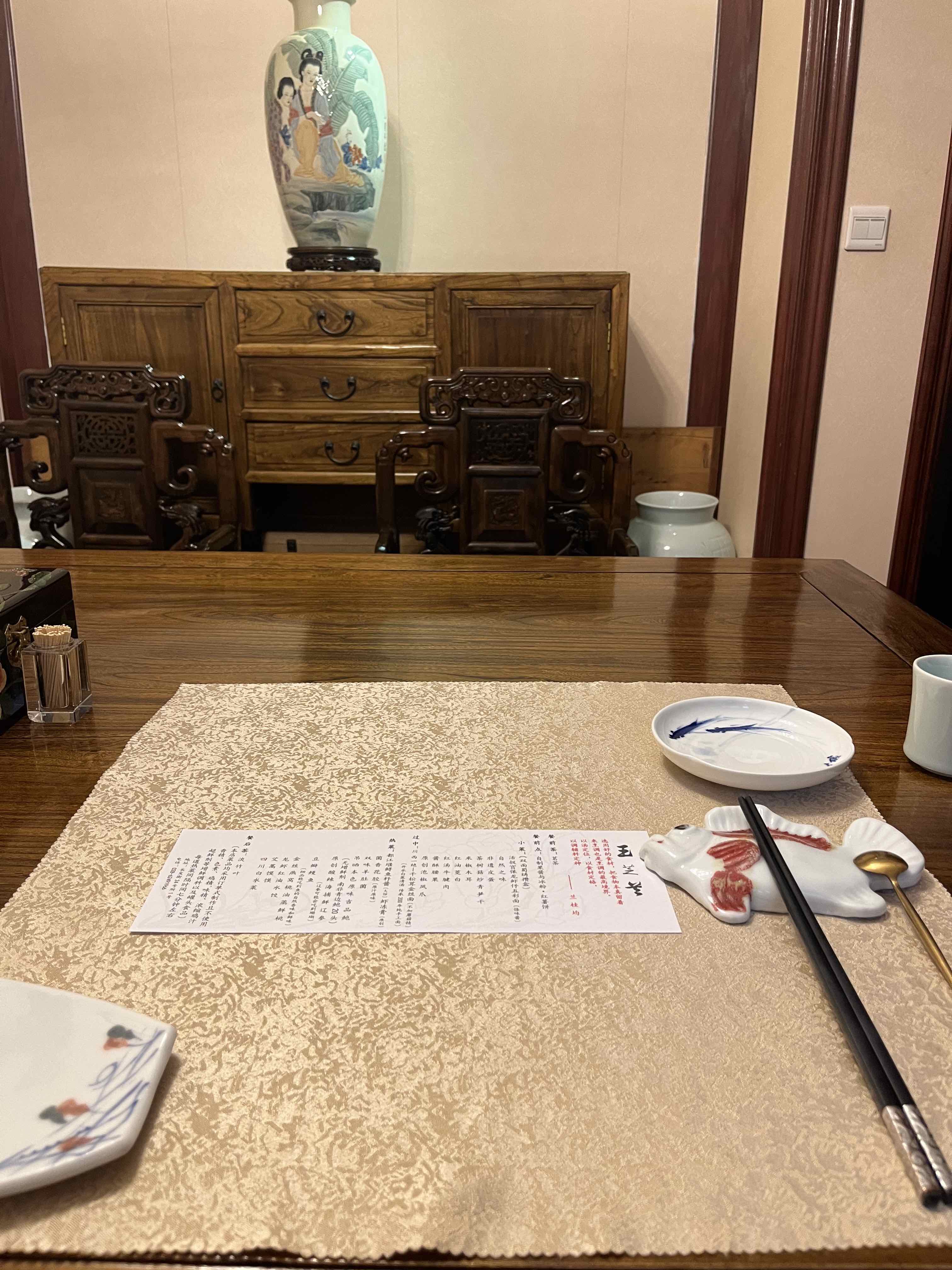 Honestly, I was not impressive at all at that point: this place is from the past.
However, all the food proven that I was wrong and naive.
Honestly, I was not impressive at all at that point: this place is from the past.
However, all the food proven that I was wrong and naive.
The menu is Chinese but presented in a very Chinese way.
It was very interfering to read the dishes are not organised in the western way; there is no clear starter, main and dessert.
However, it follows a Chinese way, that is, cold bites and hot dishes.
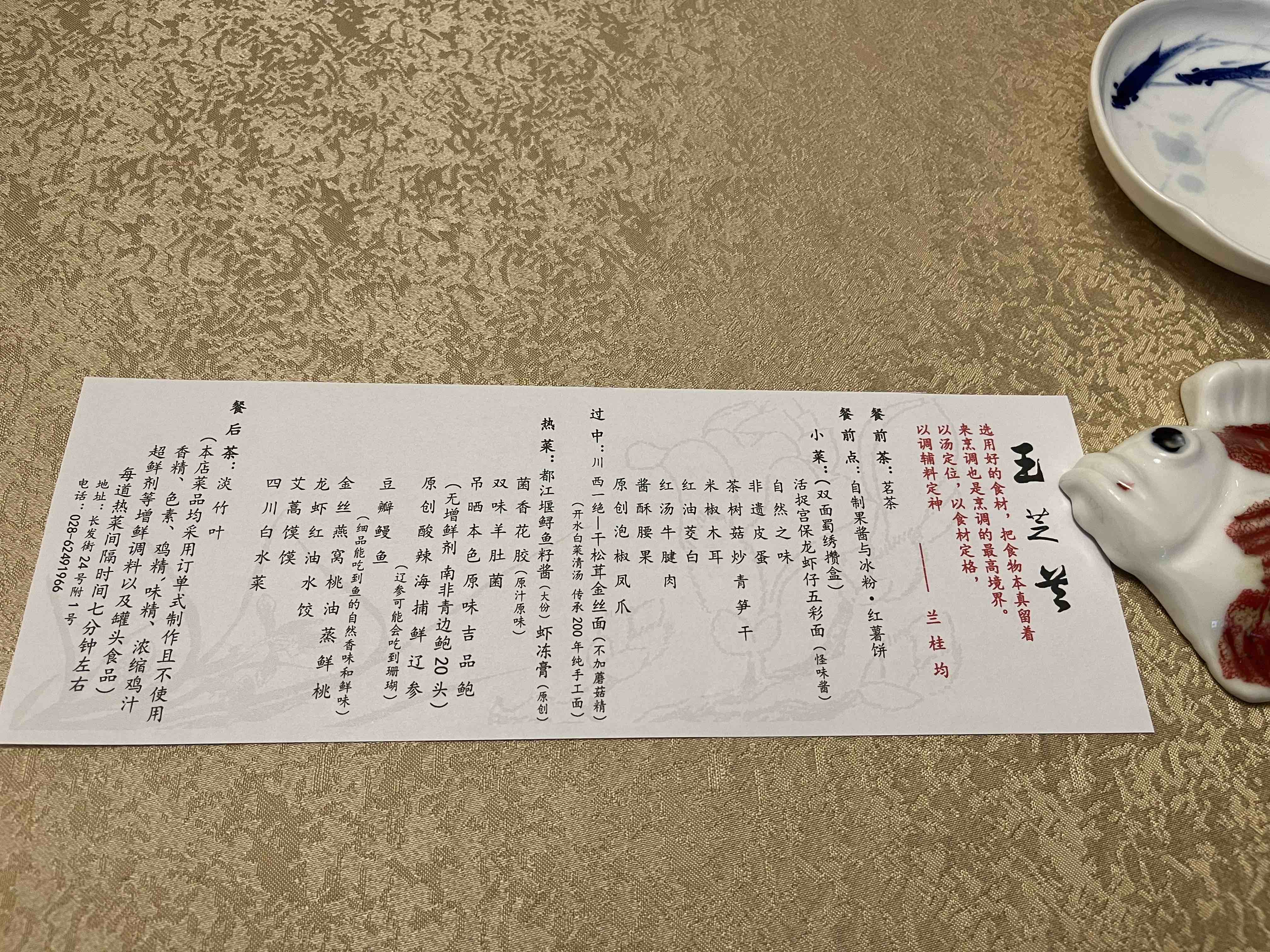 The first dish already impressed me, in particular, the noodle.
The noddle is a famous street food here, translated to Strange Flavour Noodle.
Here the flavour was just amazingly strange and pleasant: sour, sweat, chilli, numbing (a flavour is popular in Sichuan, mainly coming from Sichuan pepper that numbs your tongue).
In fact, those flavours came together without any layer.
The chaotic taste was such a fun experience.
The first dish already impressed me, in particular, the noodle.
The noddle is a famous street food here, translated to Strange Flavour Noodle.
Here the flavour was just amazingly strange and pleasant: sour, sweat, chilli, numbing (a flavour is popular in Sichuan, mainly coming from Sichuan pepper that numbs your tongue).
In fact, those flavours came together without any layer.
The chaotic taste was such a fun experience.
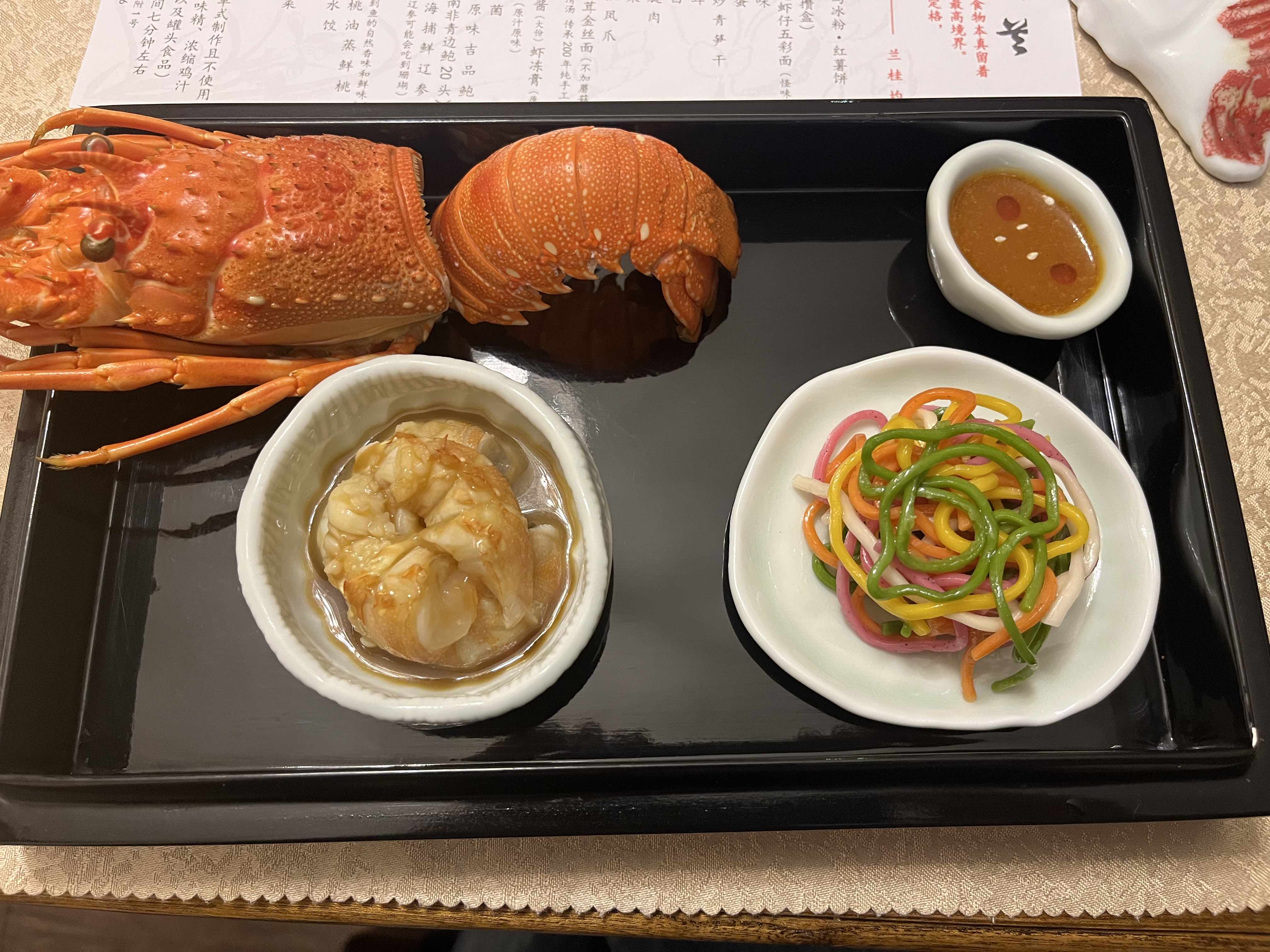 Then I got all the cold bites in a box.
Although no dish or small bite is very surprise but they represented some aspects of Sichuan cuisine.
I could see the chef plating all the bites from light and refreshing, bottom right, to strong flavour and texture, top left.
Besides, the Panda always make things cute.
Then I got all the cold bites in a box.
Although no dish or small bite is very surprise but they represented some aspects of Sichuan cuisine.
I could see the chef plating all the bites from light and refreshing, bottom right, to strong flavour and texture, top left.
Besides, the Panda always make things cute.
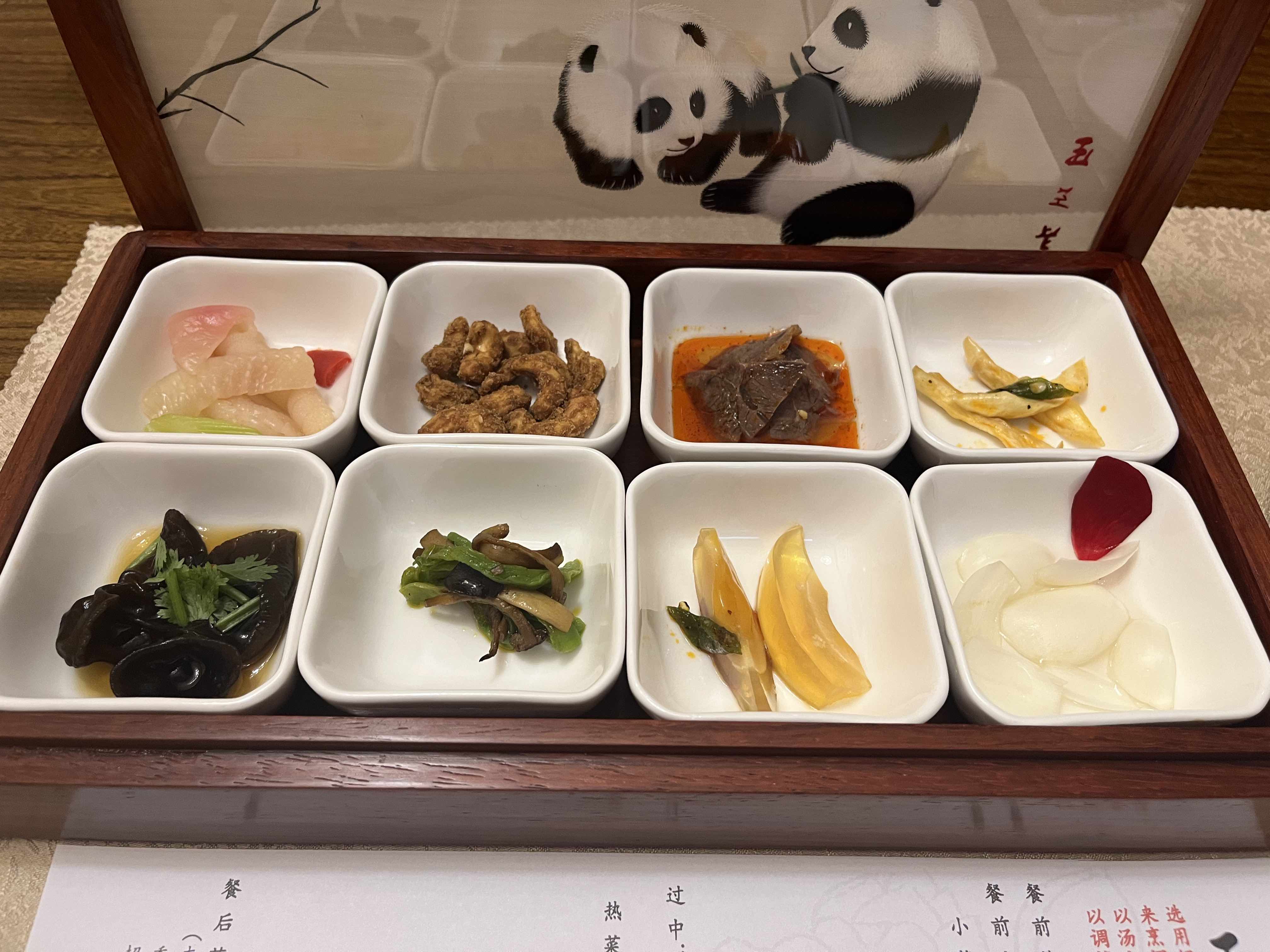
Most hot dishes here are soup based by design.
I think it is clever because it is difficult to make a “posh” stir fry.
The first one is a soup noodle.
Noodle was home made.
The soup looked very clear but it was probably concentrate from mix of bone and muscle of chicken, duck and pork, and also dry scallop.
This type of soup originally comes from a famous Sichuan dish called 开水白菜, Cabbage in “boiled water”.
It was an explosion of umami.
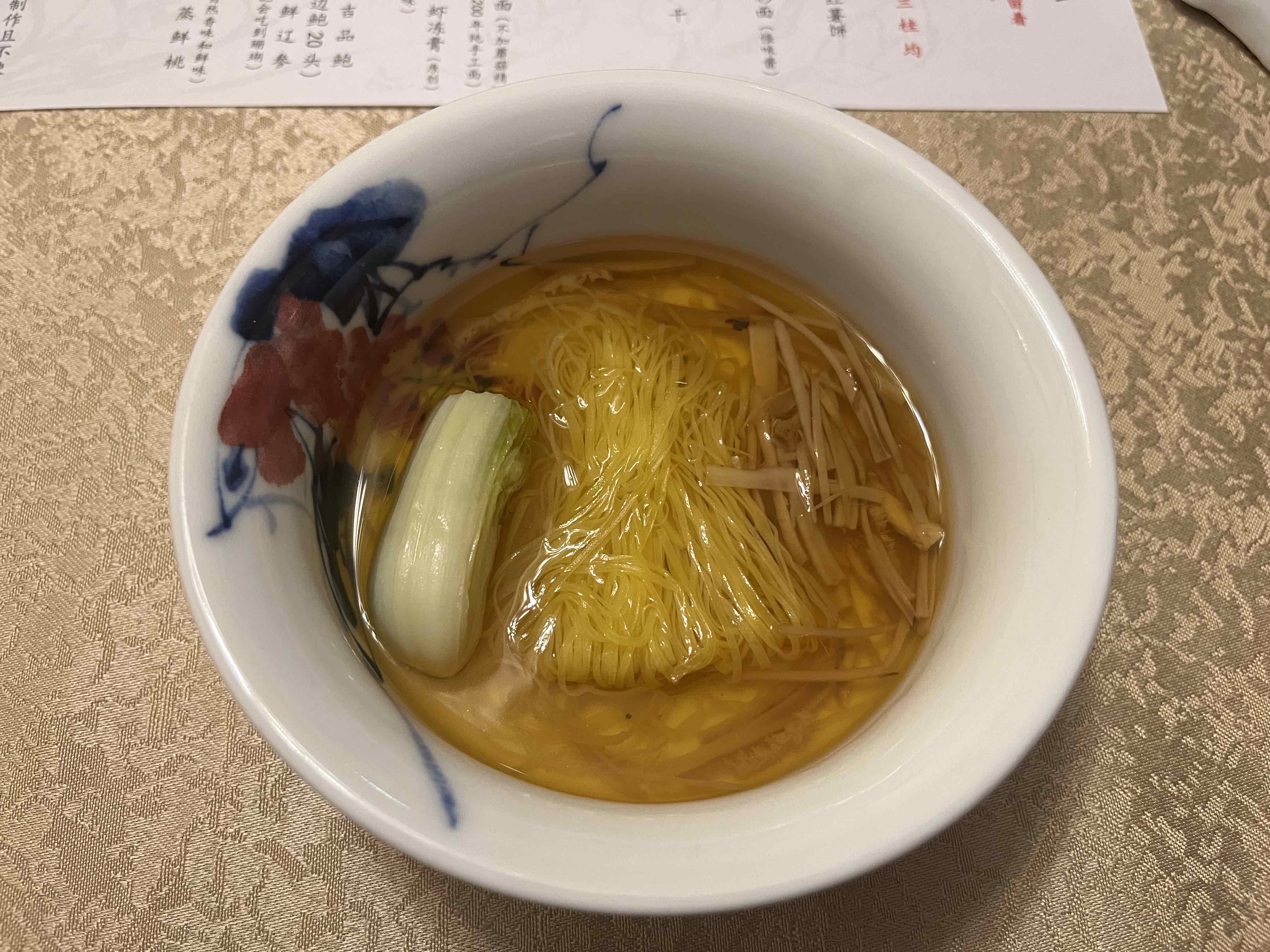 The next soup dish was fish maw (花胶) with mushroom.
The soup was very “thick”.
My lips were literally glued together on the soup.
The flavour follows the entire trend of this set, a pack of umami.
Although the fish maw has similar texture to mushroom but the former was more chewy while the latter absorbed more juice.
The next soup dish was fish maw (花胶) with mushroom.
The soup was very “thick”.
My lips were literally glued together on the soup.
The flavour follows the entire trend of this set, a pack of umami.
Although the fish maw has similar texture to mushroom but the former was more chewy while the latter absorbed more juice.
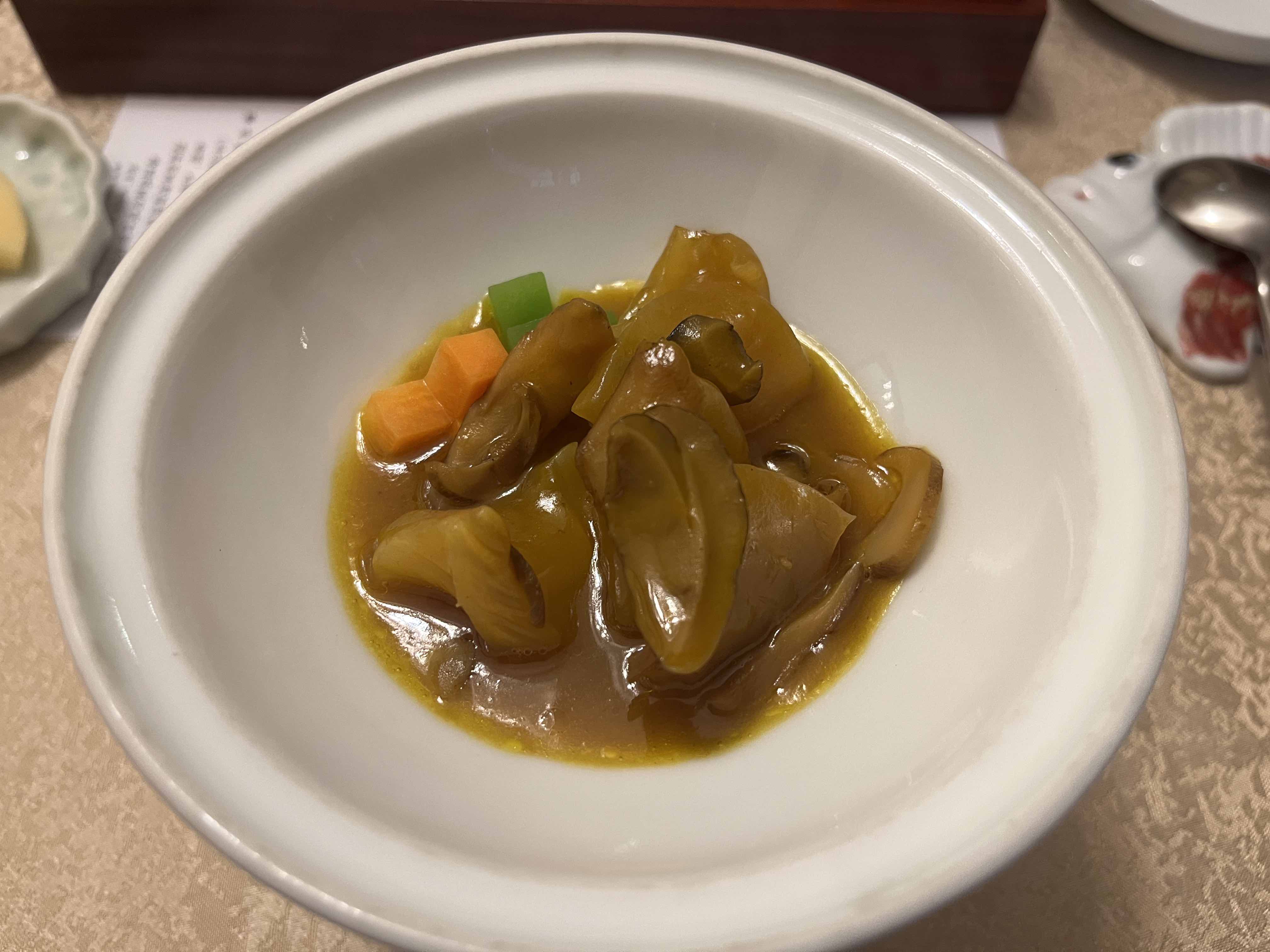 The next dish was Morchella, a type of mushroom or fungi, cooked in two styles: fry and steam.
This is the first non-soup dish.
It focused on the earthy flavour with a drizzle of Sichuan pepper powder.
The fry part provided sharper flavour because of oil, while the steam part gave more natural and soil flavouring.
The overall seasoning fresh up my mouth immediately from previous two umani-centric soups.
The next dish was Morchella, a type of mushroom or fungi, cooked in two styles: fry and steam.
This is the first non-soup dish.
It focused on the earthy flavour with a drizzle of Sichuan pepper powder.
The fry part provided sharper flavour because of oil, while the steam part gave more natural and soil flavouring.
The overall seasoning fresh up my mouth immediately from previous two umani-centric soups.
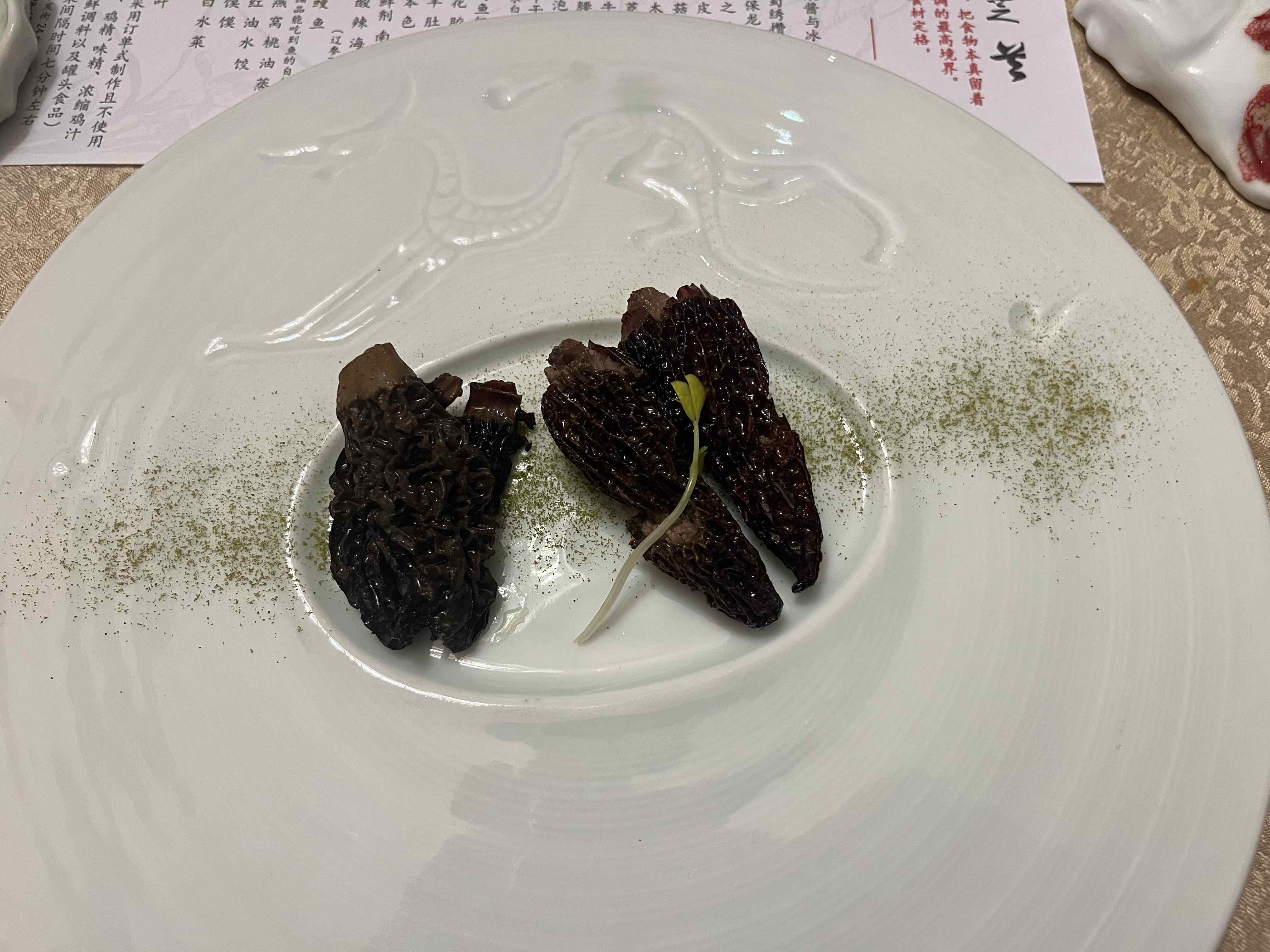 After this small interval, we were back to soup-based dish again.
One dish I really like is Hot and Sour Noodles Topping with Sea Cucumber.
Chilli and sour here noodles referred the flavour of the soup, but more importantly, a famous street food in Sichuan: noodles made from sweat potato stash in soup.
The chef decided to pair the traditional street dish with Sea Cucumber, a type of seafood popular in China that is often seen in high-end soup dishes.
The interests bit here is the flavour.
It is common that strong seasoning such as spicy, chill and sour will ruin the seafood, however, the chef balance everything in a extraordinary way.
I could taste everyday life, having a cheap noodle soup from the street, and in the same time enjoy the sophistic seafood.
After this small interval, we were back to soup-based dish again.
One dish I really like is Hot and Sour Noodles Topping with Sea Cucumber.
Chilli and sour here noodles referred the flavour of the soup, but more importantly, a famous street food in Sichuan: noodles made from sweat potato stash in soup.
The chef decided to pair the traditional street dish with Sea Cucumber, a type of seafood popular in China that is often seen in high-end soup dishes.
The interests bit here is the flavour.
It is common that strong seasoning such as spicy, chill and sour will ruin the seafood, however, the chef balance everything in a extraordinary way.
I could taste everyday life, having a cheap noodle soup from the street, and in the same time enjoy the sophistic seafood.
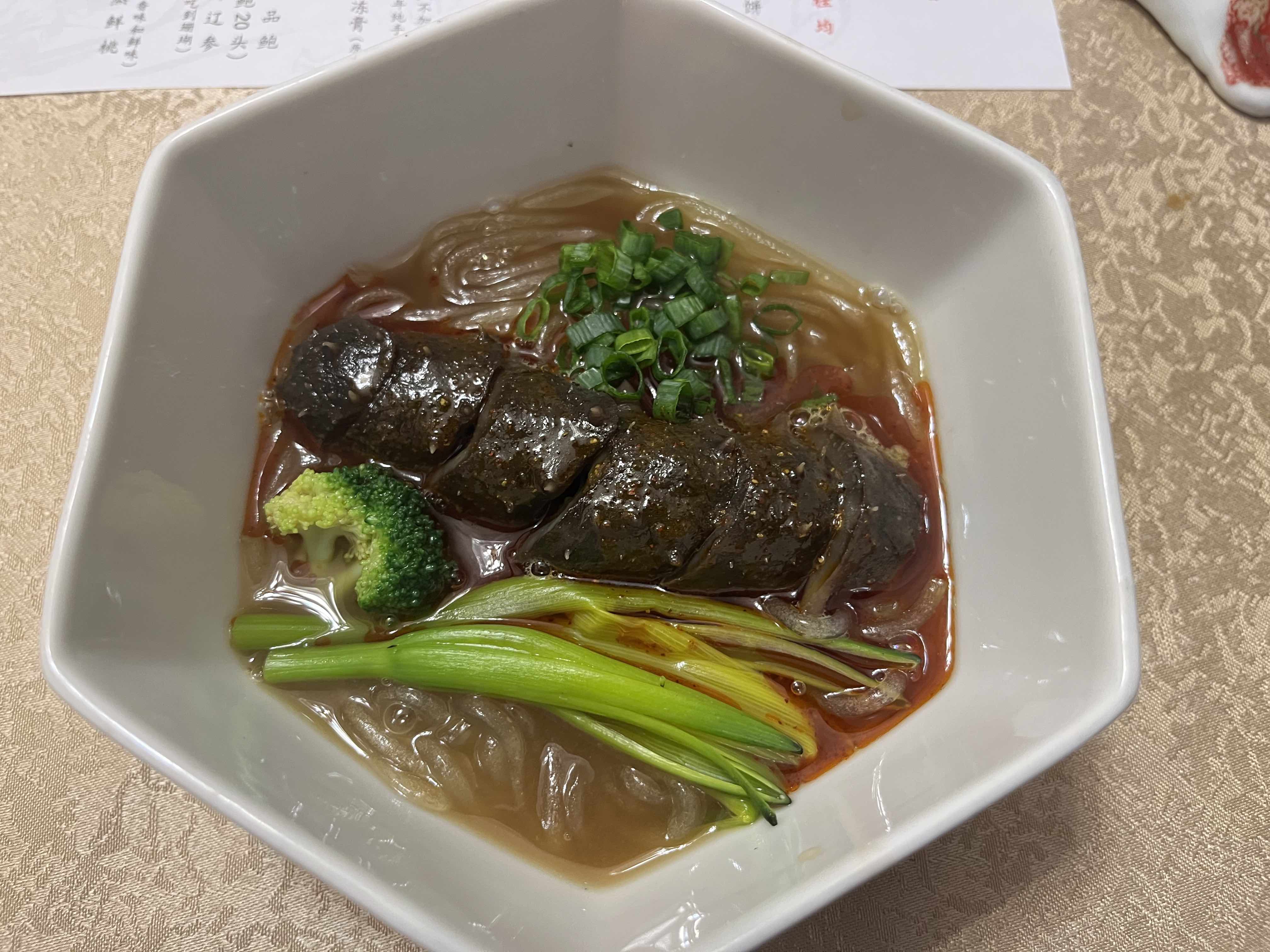 After this soup, I got another non-soup fish dishes and then the only relatively sweat dish.
It was Edible Bird’s Nest with Peach, that many Chinese believe good for the health.
The Nest basically was tasted nothing but provided some chewy texture.
The peach is fun and subtle, as it is not large amount, first of all, and not all sweat but a mix of bitter too.
After this soup, I got another non-soup fish dishes and then the only relatively sweat dish.
It was Edible Bird’s Nest with Peach, that many Chinese believe good for the health.
The Nest basically was tasted nothing but provided some chewy texture.
The peach is fun and subtle, as it is not large amount, first of all, and not all sweat but a mix of bitter too.
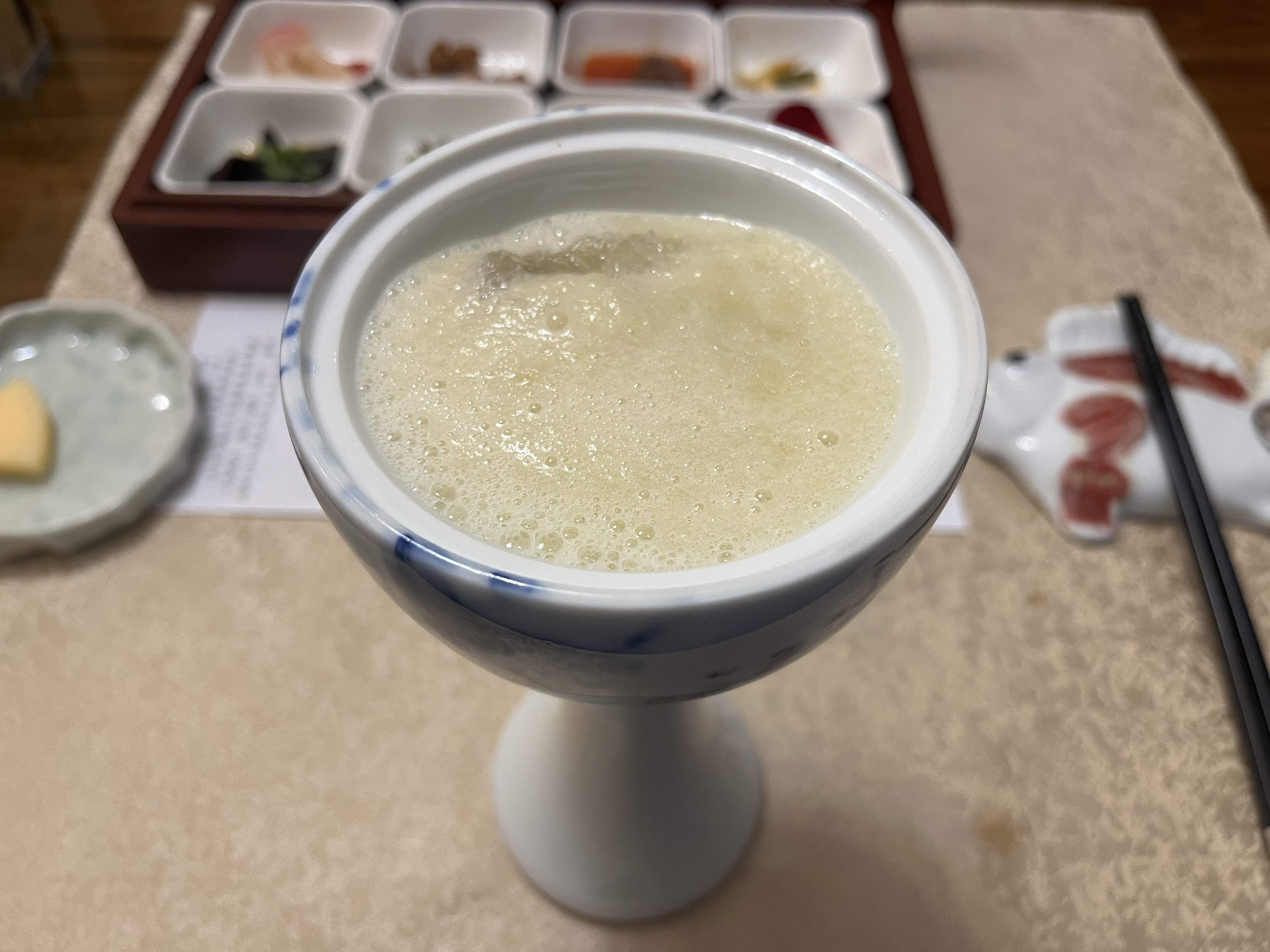 At this point, I definitely not expected the immediate next dish back to spicy and chilli, a lobster dumpling.
In fact, dumping is often counted as Dim Sum, i.e., 点心, or small snack (before or after meals).
Therefore it makes sense by the end of the set I get dumpling.
The strong seasoning here contrasts the previous mild and sweat seasoning very well and make both dishes well-thought.
At this point, I definitely not expected the immediate next dish back to spicy and chilli, a lobster dumpling.
In fact, dumping is often counted as Dim Sum, i.e., 点心, or small snack (before or after meals).
Therefore it makes sense by the end of the set I get dumpling.
The strong seasoning here contrasts the previous mild and sweat seasoning very well and make both dishes well-thought.
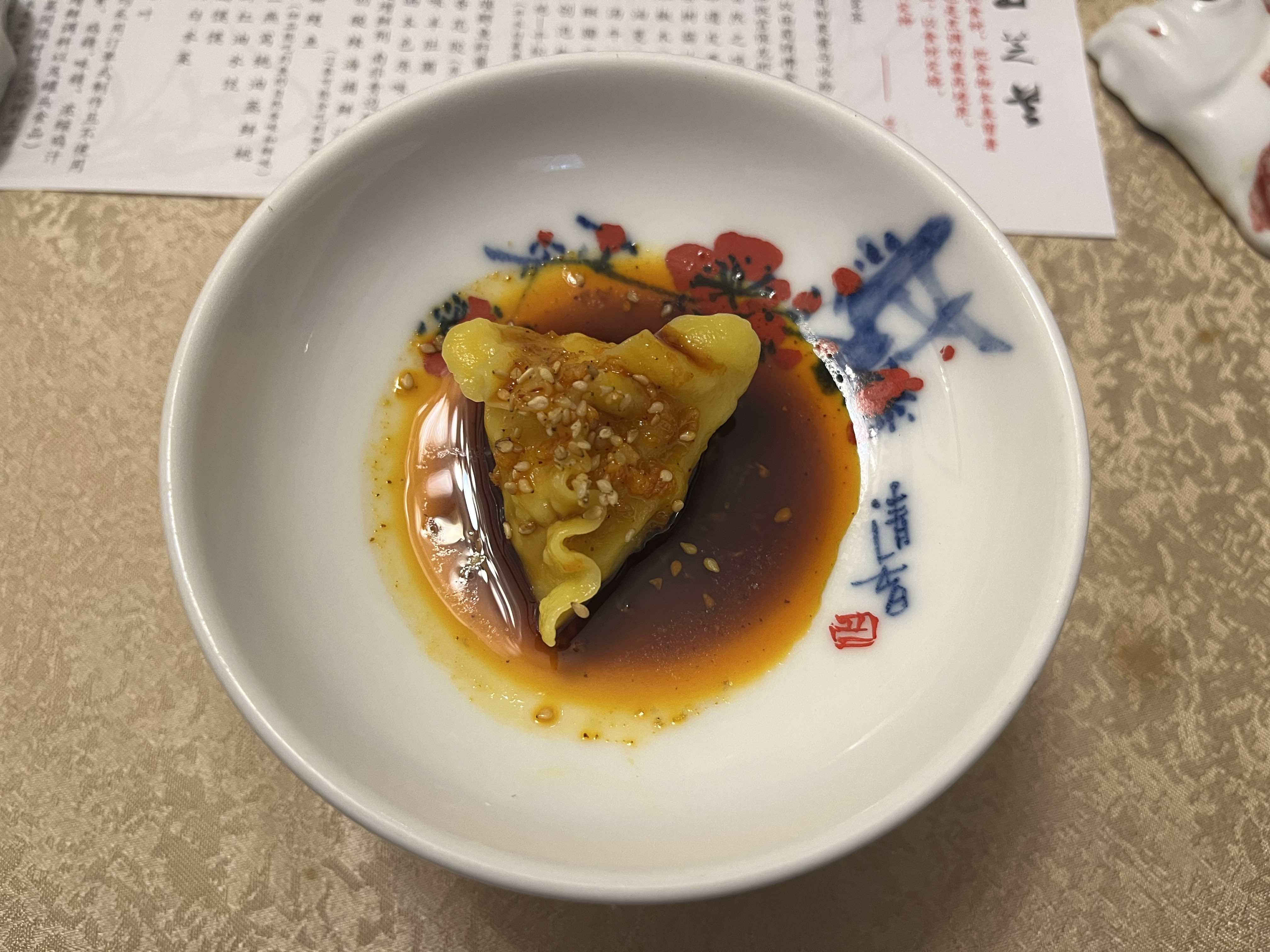 The last dish was a Chinese Mugwort Cake.
Chinese mugwort is leaves with unique smell and taste, and every Chinese recognise it.
The cake was a soft cake, probably made from a mix of flour and rice.
In fact, such cake, in various of flavour, e.g., plain and pumpkin, is a very common dish for by the end of a dinning out.
The last dish was a Chinese Mugwort Cake.
Chinese mugwort is leaves with unique smell and taste, and every Chinese recognise it.
The cake was a soft cake, probably made from a mix of flour and rice.
In fact, such cake, in various of flavour, e.g., plain and pumpkin, is a very common dish for by the end of a dinning out.
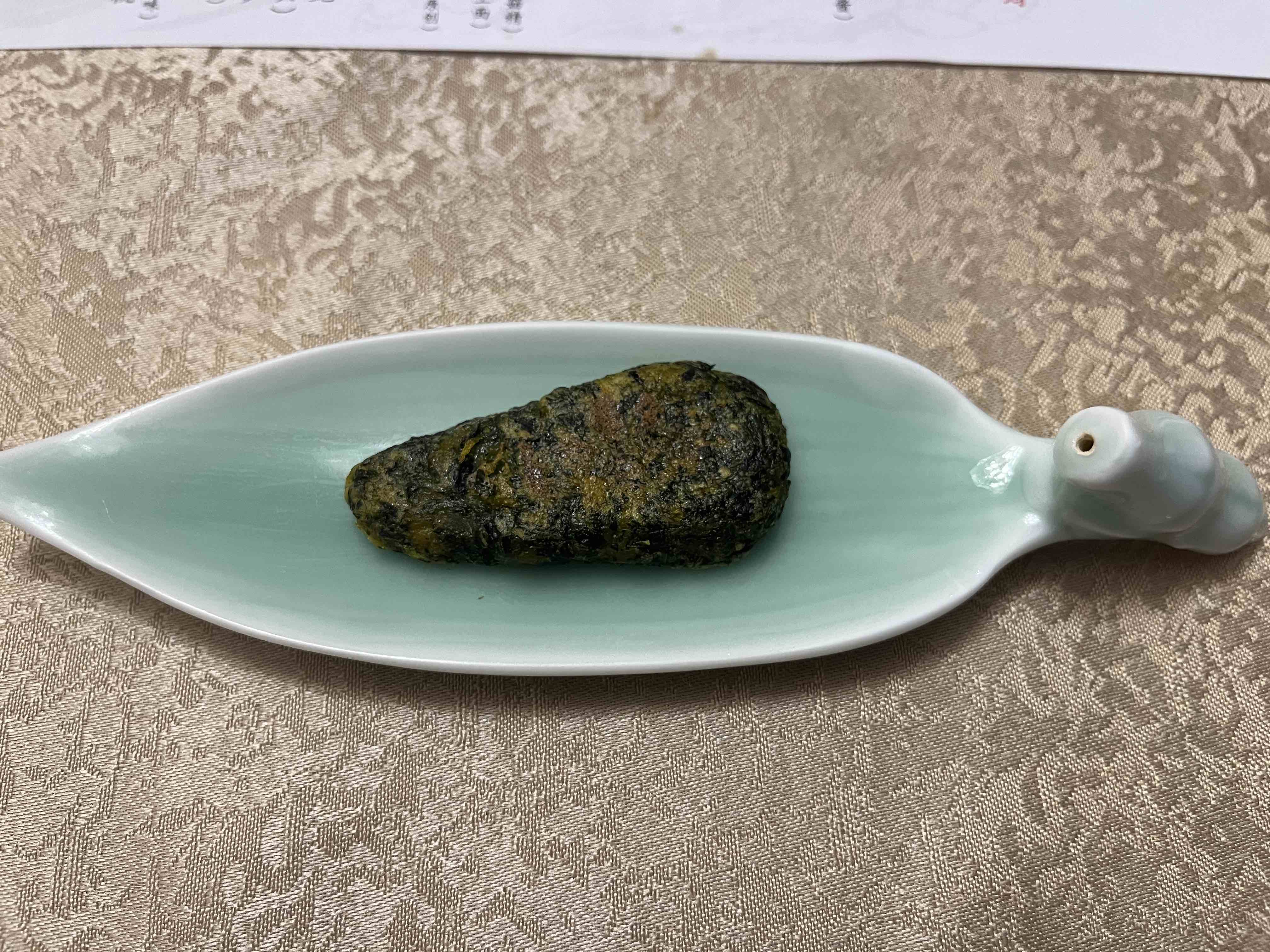
This entire set is just phenomenon, a well-thought set with a great understanding of the local food culture and also understanding of high-end dinning. I wish more restaurants and chefs like this emerging in China! I have to say, it was a really good day, probably in my life. I found this amazing restaurant that can really represent Chinese food and also, I met a guy in the evening, (Hello, Mr. Crab!), whom I felt a crush on and I simply could not be rational with. While for the latter, it will probably be another long story, either good or bad. Anyway, Yu Zhi Lan is f**k amazing!
